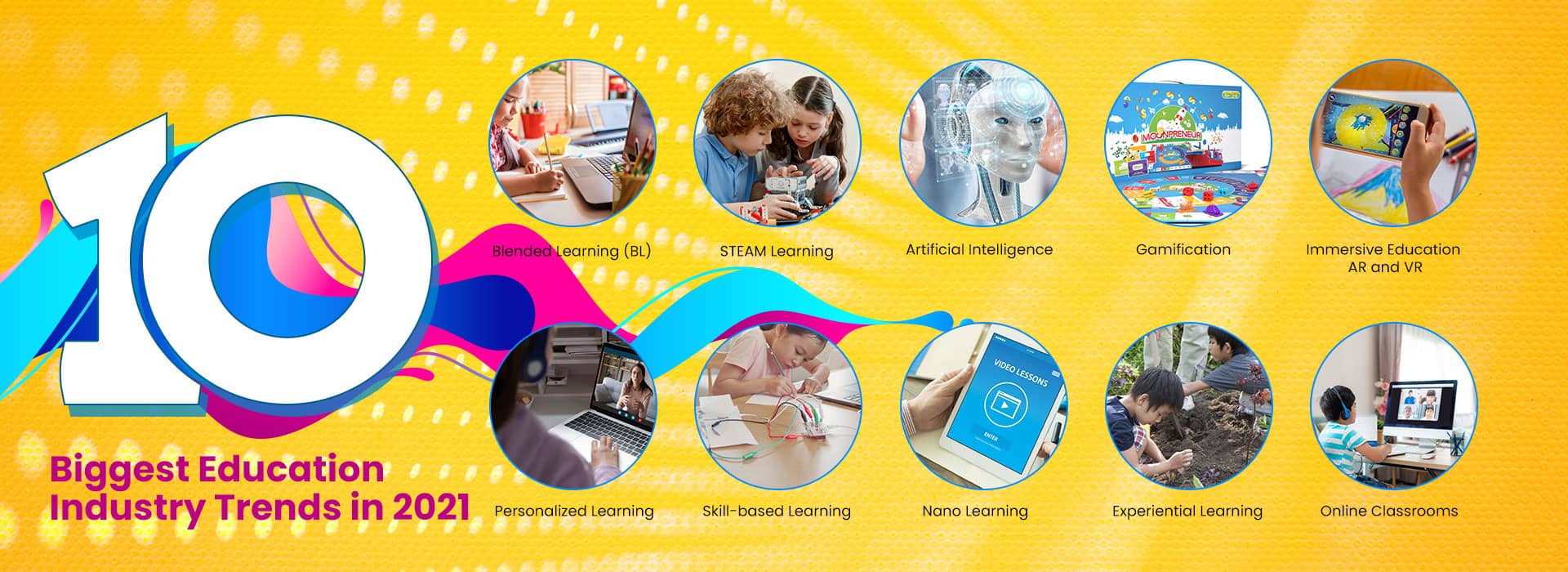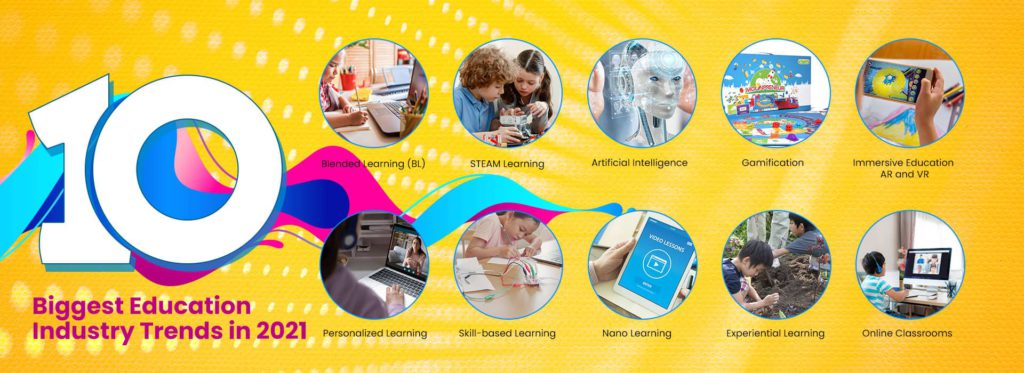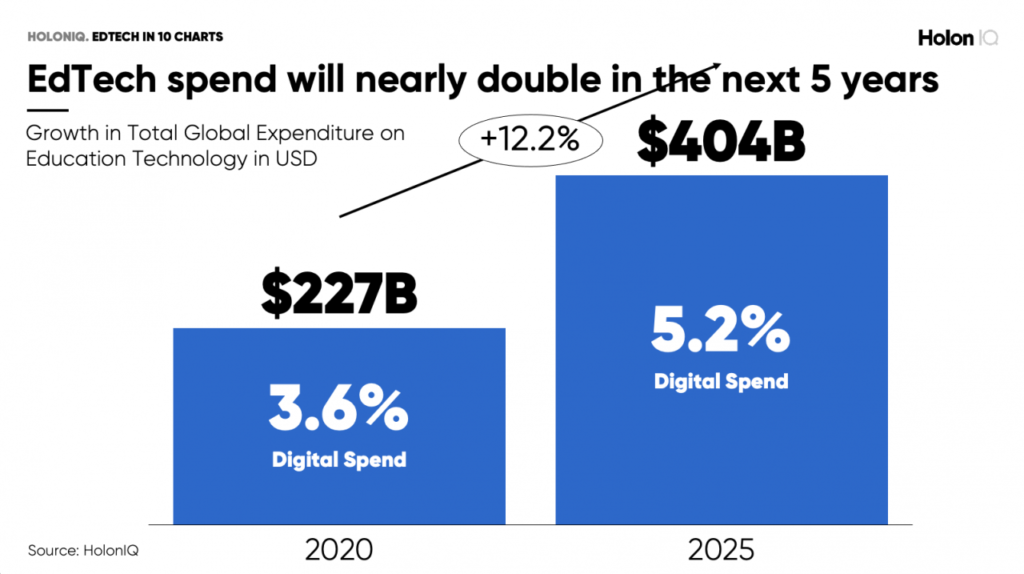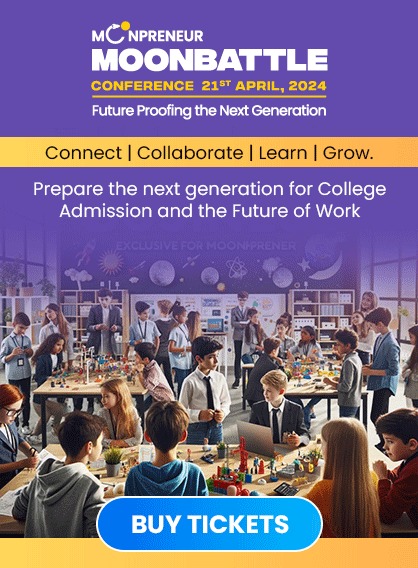

Arpana
10 Biggest Education Industry Trends in 2021
The world was not a perfect place, but it wasn’t bad either. The world was enjoying the comfort and connectivity provided by the technological revolutions while indulging in futuristic planning, to say the least.
But then came a big jolt rattling the entire ecosystem, snatching people away from the lap of luxury and throwing them into a whirlwind of chaos created by the COVID-19. The unstoppable pandemic tossed the world upside down in the literal sense while dismantling every aspect of life.
Once the dust settled, the world started struggling to stand on its feet. Amid doom and gloom, technological innovations quickened the recovery by bringing in hope, especially for the school and college-goers.
All the futuristic setups such as virtual classroom models, technological teaching frameworks, high-end learning systems, etc. that were in the pipeline were implemented hurriedly turning the virtual learning system into reality overnight.
Such was the crisis, it didn’t give time to think. Consequently, people jumped on the distance learning bandwagon without much ado. Kindergarten to high school goers, management students to medical students, everyone was scurrying online to save their academic year from going waste.
Before the pandemic, Big Data, Machine Learning, and the Internet of Things (IoT) were trending leisurely in the educational sector, but when distance learning was implemented across the world to combat COVID-19, it became the new normal.
Earlier, distance education, where students and instructors were separated by geographies and connected by technology, wasn’t widely accepted, but now it is mainstream. To add to it, once a buzz about changing trends in the education sector with EdTech, threatening to completely revolutionize the education industry by transforming curriculums, has now become a reality. Thanks to all the changes, the educational sector witnesses unprecedented changes.
Source: HolonIQ
EdTech – an integration of technology and education to provide practical learning experiences – is trending and we bring to you the top 10 trends in education that are likely to dominate 2022.
1. Blended Learning (BL)
Blended Learning is a strategically designed package of face-to-face learning and web-based virtual learnings to enhance the learning experience for the students.
Earlier, Blended Learning was implemented in higher education institutes to allow students the best of both worlds. And Blended Learning has shown encouraging reports because it shifts the focus from teaching to learning thus encouraging students’ deeper engagement in the process.
2. STEAM Learning
STEAM stands for science, technology, engineering, art, and mathematics. STEAM learning is already trending and in the future, its demand will grow manifold because this project-based learning experience enhances creativity, critical thinking and develops problem-solving skills in children.
It has an inclusive approach that provides a hands-on learning experience. STEAM is also helping in recognizing the importance of art and understanding its correlation to engineering, technology, and mathematics.
3. Artificial Intelligence
The USP of Artificial Intelligence is that it is personalizing learning. You must wonder how! When students use the Internet of Things (IoT) devices and other digital tools to connect, the process helps in gathering data on each individual.
The data is further analyzed, information is extracted to develop customized learning tools and learning opportunities for students. According to the Artificial Intelligence Market in the US Education Sector report, artificial intelligence in U.S. education is expected to grow by 47.5% from 2017-2021.
A Forbes report indicates that AI can drive efficiency, personalization, and streamline admin tasks to allow teachers the time and freedom to provide understanding and adaptability—uniquely human capabilities where machines would struggle.
4. Gamification
One of the sought-after trends of 2022 will be educational games. Moonpreneur, the ultimate business strategy game by Moonpreneur, is an example. The board game brings the entrepreneurial experience to your living rooms to enhance the entrepreneurial skills of both adults and children.
The game complements the Innovator Program, a 4-stage product-based entrepreneurial learning system by interspersing learning with fun. Many such games have already thronged the marketplace and the users are lapping them up.
5. Immersive Education AR and VR
Google is pioneering this learning process. According to a report, Google has enabled immersive VR and AR learning experiences for millions of students around the world with Google Expeditions and Tour Creator.
Expeditions and Tour Creator is a virtual reality app that provides an interactive and virtual environment for students to explore and provides students with the tools to create their own VR experiences. Augmented reality makes it possible to bring virtual items into your classroom, and this is one of the many products related to immersive learning.
Many players have already entered the market with immersive learning tools. Sooner or later it will be an integral part of the education system.
6. Personalized Learning
The current curriculum is for all–math students have to give equal attention to art, while an artistic mind has to deal with science. But personalized learning is all set to change this by providing customized learning based on the interest, strengths, and skills of each student.
In the current system, the students revolve around curriculums, but Personalized Learning will give it a flip and the curriculums will revolve around students and provide customized curriculums to strengthen their area of interest.
This new educational environment will empower the students by enhancing their knowledge and making them self-reflective. Self-reflection comes with many benefits – it helps in improving decisions and behavior too in real-time.
7. Skill-based Learning
The Rote-learning system, which forces students to mug up and reproduce the information in the exams, doesn’t prepare them for the future. Skilled individuals with practical experience can grow and taste success.
Therefore, the stress will be on skilled-based learning and project-based learning so that individuals can reap positive results in the future. It is already in demand.
8. Nano Learning
Researchers believe that people’s attention span is shrinking. According to a study by European scientists from Technische Universität Berlin, the collective attention span of people is narrowing, and this effect occurs – not only on social media – but also across diverse domains including books, web searches, movies popularity, and more.
Many believe that Nano Learning or bite-sized learning can combat this growing problem by creating miniature learning modules that the students would find easier to understand and imbibe. The small capsules of shorter duration (2-5 minutes) in the form of videos, podcasts, or apps will help in engaging, informing, and keeping the interests of the students.
9. Experiential Learning
Boston University defines experiential learning as an engaged learning process whereby students “learn by doing” and by reflecting on the experience. Experiential learning activities can include but are not limited to hands-on laboratory experiments, internships, practicums, field exercises, study abroad, undergraduate research, and studio performance.
Experiential Learning fosters planning, decision-making, teamwork in the students. In the coming years, experiential learning will move to online, and immersive learning tools will take them through real-life experiences virtually.
10. Online Classrooms
Today, online classrooms are a reality because of the pandemic, but much before the COVID-19, EdTech companies were already creating virtual classrooms to upskill children. Online classrooms remove geographical boundaries by reaching out to audiences in far-flung areas with technology.
That these classrooms are both cost-effective and flexible, is adding to its popularity. The trend will grow in the future.
These trends will evolve as new tools and learning processes will arrive to make the education industry more tech-savvy. To prepare for the future, EdTech businesses should stay on top of these education trends in 2022.




















